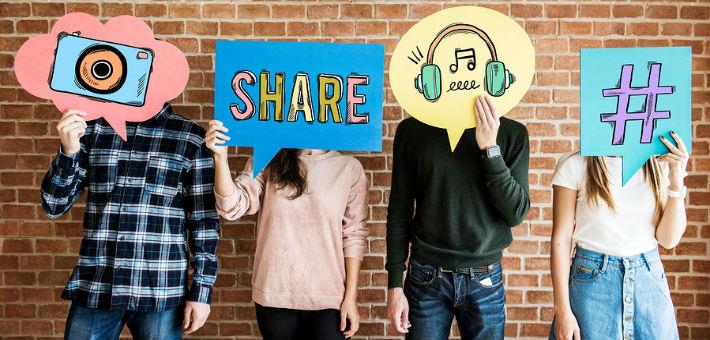
Split Feelings - Why Teens Share Their Emotions on Different Social Media Platforms
Social sharing of emotions, meaning telling someone about an experience and the emotions felt, can be a good strategy for teens to regulate their emotions. Especially social media platforms give teens plenty of opportunities to share their emotions with others. A study in Computers in Human Behavior shows, however, that not all platforms are used equally - some are more likely to be used for sharing positive emotions and others for sharing negative ones.
Take aways
- Although most teens prefer to share their emotions face-to-face, they also share emotions on social media platforms.
- Snapchat, Facebook and Instagram are used mostly for sharing positive emotions.
- Twitter and Messenger are also used for sharing negative emotions.
- Whether teens socially share their emotions is influenced by platform characteristics (public vs. private), social norms (no negative emotions on Snapchat or Instagram), and individual preferences.
Study information
The question?
On which social media platforms do teens share their positive and/or negative emotions and why?
Who?
22 teens attending different classes, such as general, arts, technical, vocational and education (mean age: 16 years; 59% girls)
Where?
Belgium
How?
In order to investigate which social media platforms teens use to share their emotions and why, the researchers conducted 22 in-depth interviews. Each interview consisted of two parts.
In the first part, teens were asked to describe several events that happened in the last months. These events could be daily uplifts (e.g., getting a good test result) or hassles (e.g., losing a sports game), but also bigger life events like losing a family member or having health issues. For each event, teens told what happened, how they felt, and whether, with whom, and how they shared their emotions.
In the second part, teens were asked whether and how they used certain social media platforms for social sharing of emotions. For this purpose, teens were presented with visual aids of the following social media platforms: Facebook, Instagram, Snapchat, Twitter, Tumblr, YouTube, 9Gag, blogs, and "other."
Facts and findings
- Most teens used Snapchat, Facebook and Instagram for sharing positive emotions and Twitter and Messenger for sharing negative emotions.
- The choice of social media platform was influenced by three factors:
- Technical characteristics:
- On the more public platforms, such as Facebook, teens often only stated what happened or they only vented their feelings - not both.
- Teens preferred text messages to photos, especially when sharing negative emotions.
- Social Norms:
- Teens conformed to the norm that it is not acceptable to share negative emotions on Snapchat or Instagram.
- Individual preferences.
- Technical characteristics:
- Critical note: Only a small number of teens were interviewed for this study, which limits the degree to which the results can be generalized to all teens.